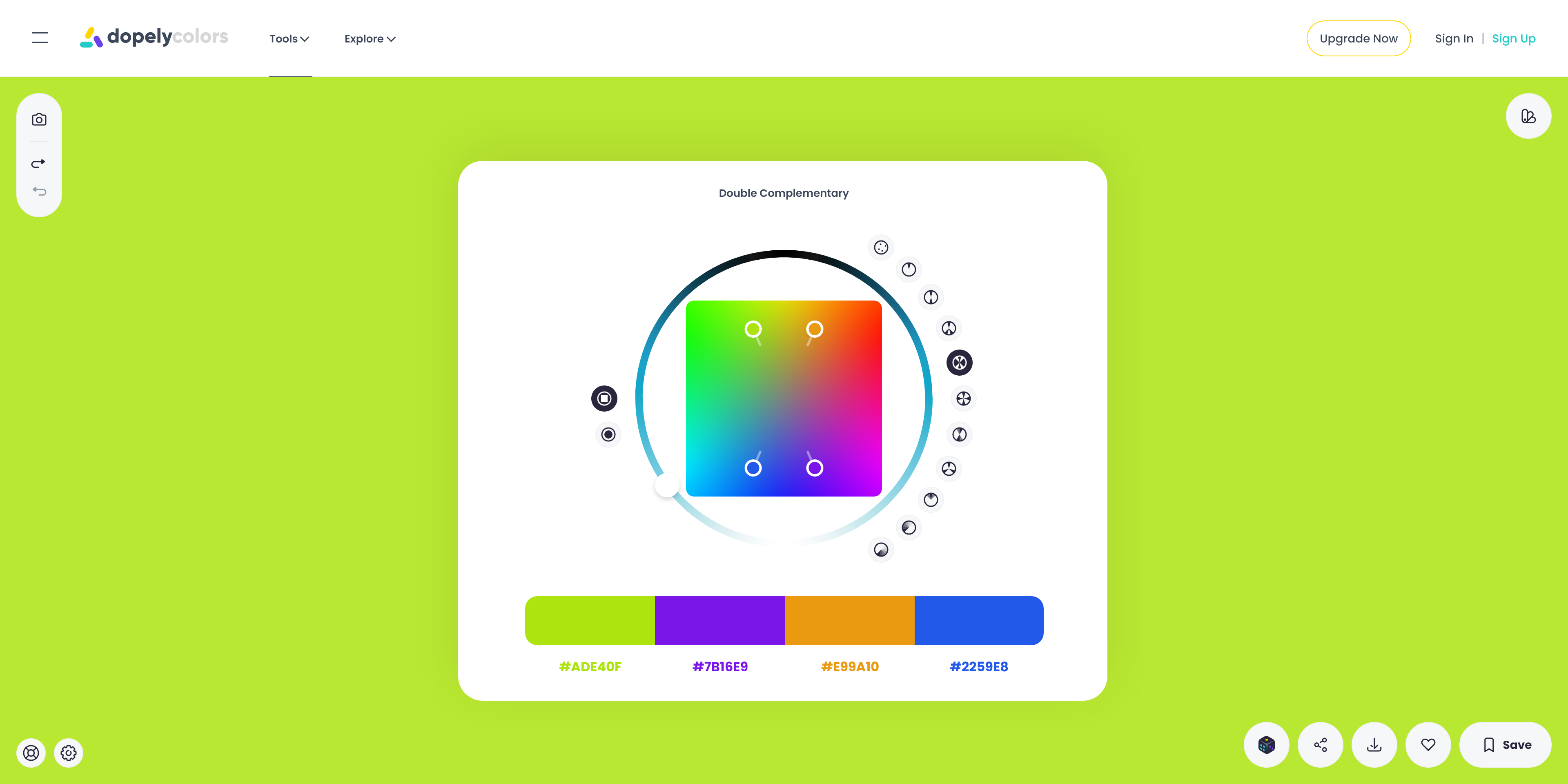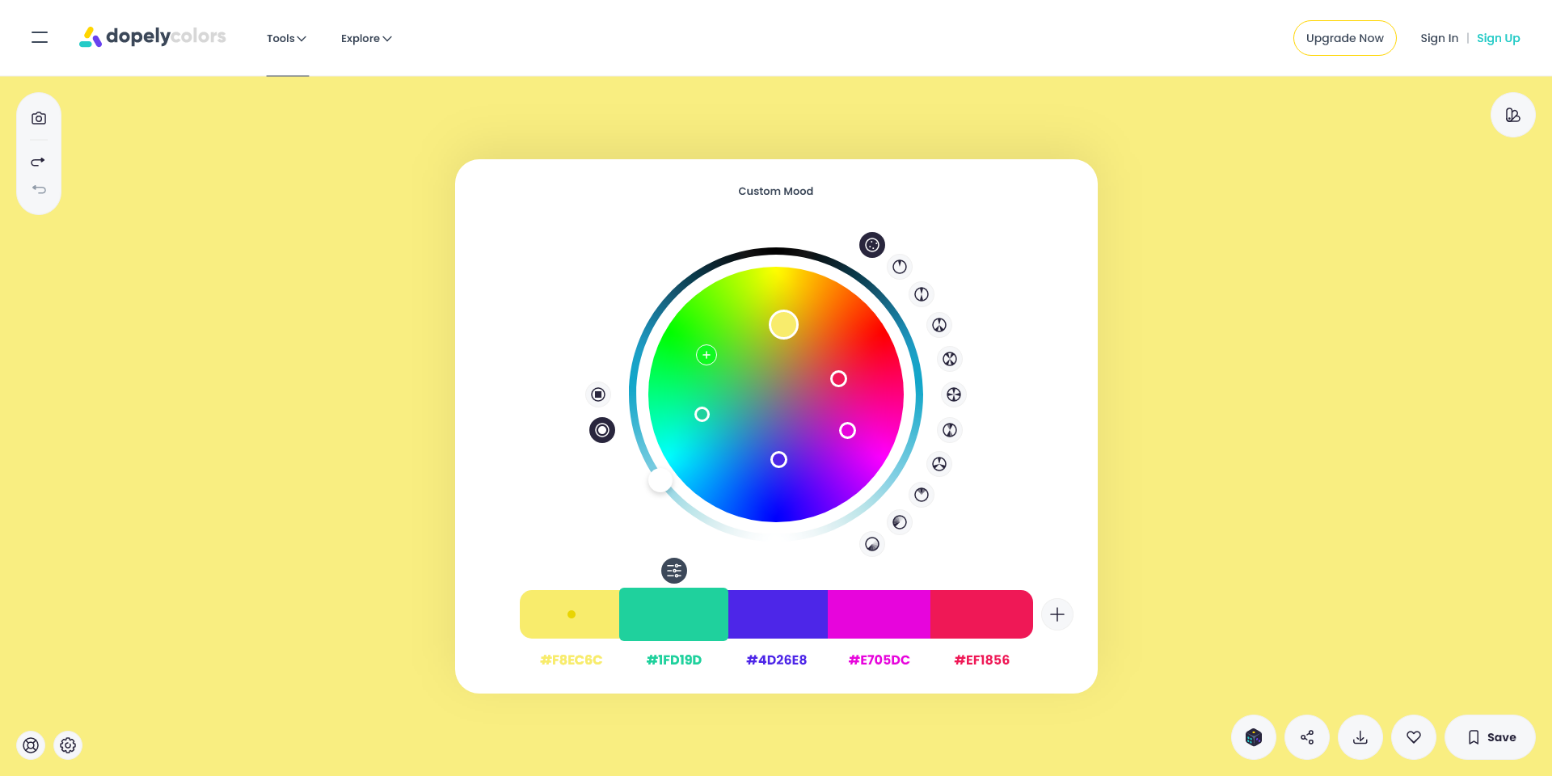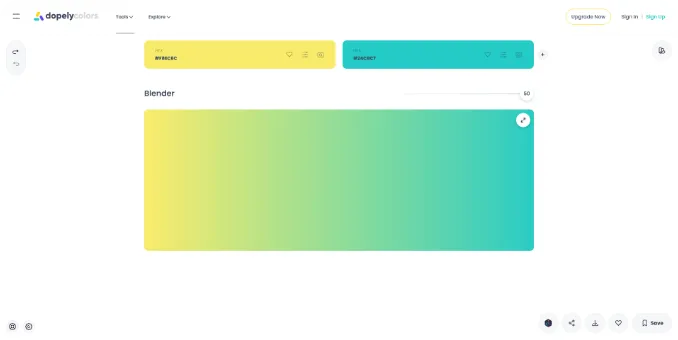About Color Wheel Tool Using Color Theory
When picking colors, one of the most common concerns is deciding which hues go together. The color wheel is a simple tool based on color theory that can help answer that question. Every decorative color combination can be defined by where it resides on the color wheel, a diagram that maps the colors of the rainbow.The color wheel makes color relationships easy to see by dividing the spectrum into 12 basic hues: three primary colors, three secondary colors, and six tertiary colors. Once you learn how to use it and its hundreds of color combinations, the color wheel can provide a helpful reference when deciding what colors to try in your design, home, etc.
What is Color Wheel?
A color wheel or color circle is an abstract illustrative organization of color hues around a circle, which shows the relationships between primary colors, secondary colors, tertiary colors etc
A color wheel based on RGB (red, green, blue) or RGV (red, green, violet) is an additive color wheel; Alternatively, the same arrangement of colors around a circle with cyan, magenta, yellow (CMYK) is a subtractive color wheel.
Most color wheels are based on three primary colors, three secondary colors, and the six intermediates formed by mixing a primary with a secondary, known as tertiary colors, for a total of 12 main divisions; some add more intermediates, for 24 named colors. Other color wheels, however, are based on the four opponent colors and may have four or eight main colors.

How the Color Wheel Works
Primary colors are red, blue, and yellow, these colors are pure, which means you can't create them from other colors, and all other colors are created from them.Secondary colors are between the equidistant primary color spokes on the color wheel: orange, green, and violet. These hues line up between the primaries on the color wheel because they are formed when equal parts of two primary colors are combined.Tertiary colors are formed by mixing a primary color with a secondary color next to it on the color wheel. With each blending (primary with primary, then primary with secondary), the result hues become less vivid.
How to Use the Color Wheel to Build Color Schemes
You can rely on the color wheel's segmentation to help you mix colors and create palettes with varying degrees of contrast. There are four common types of color schemes derived from the color wheel.
Monochromatic Color Palette
- Three shades, tones, and tints of one base color. Provides a subtle and conservative color combination. This is a versatile color combination that is easy to apply to design projects for a harmonious look. Although the monochromatic look is the easiest color scheme to understand, it's perhaps the trickiest to pull off. A design filled with just one color can feel boring or overwhelming, depending on how you handle it.
Analogous Color Palette
- For a bit more contrast, an analogous color scheme includes colors found side by side, close together on the wheel, such as orange, yellow, and green, for a colorful but relaxing feel. Neighboring hues work well in conjunction with each other because they share the same base colors. The key to success for this scheme is to pick one shade as the main, or dominant, color in a room; it's the color you see the most of. Then choose one, two, or three shades to be limited-use accent hues. This living room demonstrates an analogous scheme of blue, purple, and fuchsia.
Complementary Color Palette
- A complementary color scheme is made by using two hues directly opposite each other on the color wheel, such as blue and orange, which is guaranteed to add energy to any design. These complementary colors work well together because they balance each other visually. You can experiment with various shades and tints of these complementing color wedges that find a scheme that appeals to you.
Split Complementary Color Palette
- Alternatively known as a compound color scheme,split complementary color scheme consists of two opposite colors placed either side of one base color. This is less attractive than complementary, but just as effective. A good example is Taco Bell's logo, which consists of blue, purple and yellow colors.
Triadic Color Palette
- Triadic color scheme is made by three colors that are evenly spaced on the color wheel, which provides a high contrast color scheme, but less so than the complementary color combination — making it more versatile. This combination creates bold, vibrant color palettes.
Tetradic Color Palette
- A tetradic color scheme is a special variant of the dual color scheme, with the equal distance between all colors. All four colors are distributed evenly around the color wheel, causing there is no clear dominance of one color. Tetradic color schemes are bold and work best if you let one color be dominant, and use the others as accents. The more colors you have in your palette, the more difficult it is to balance.
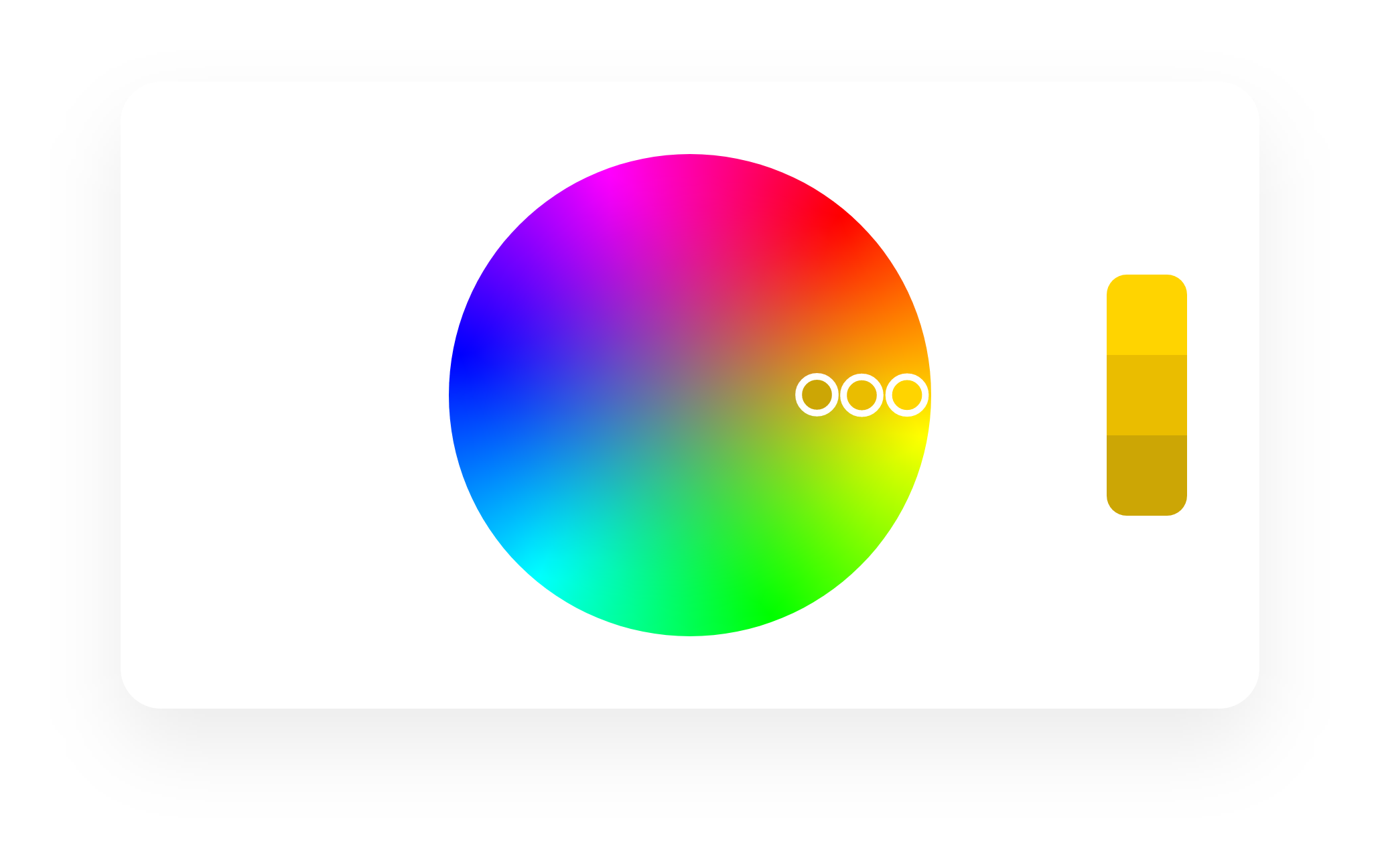
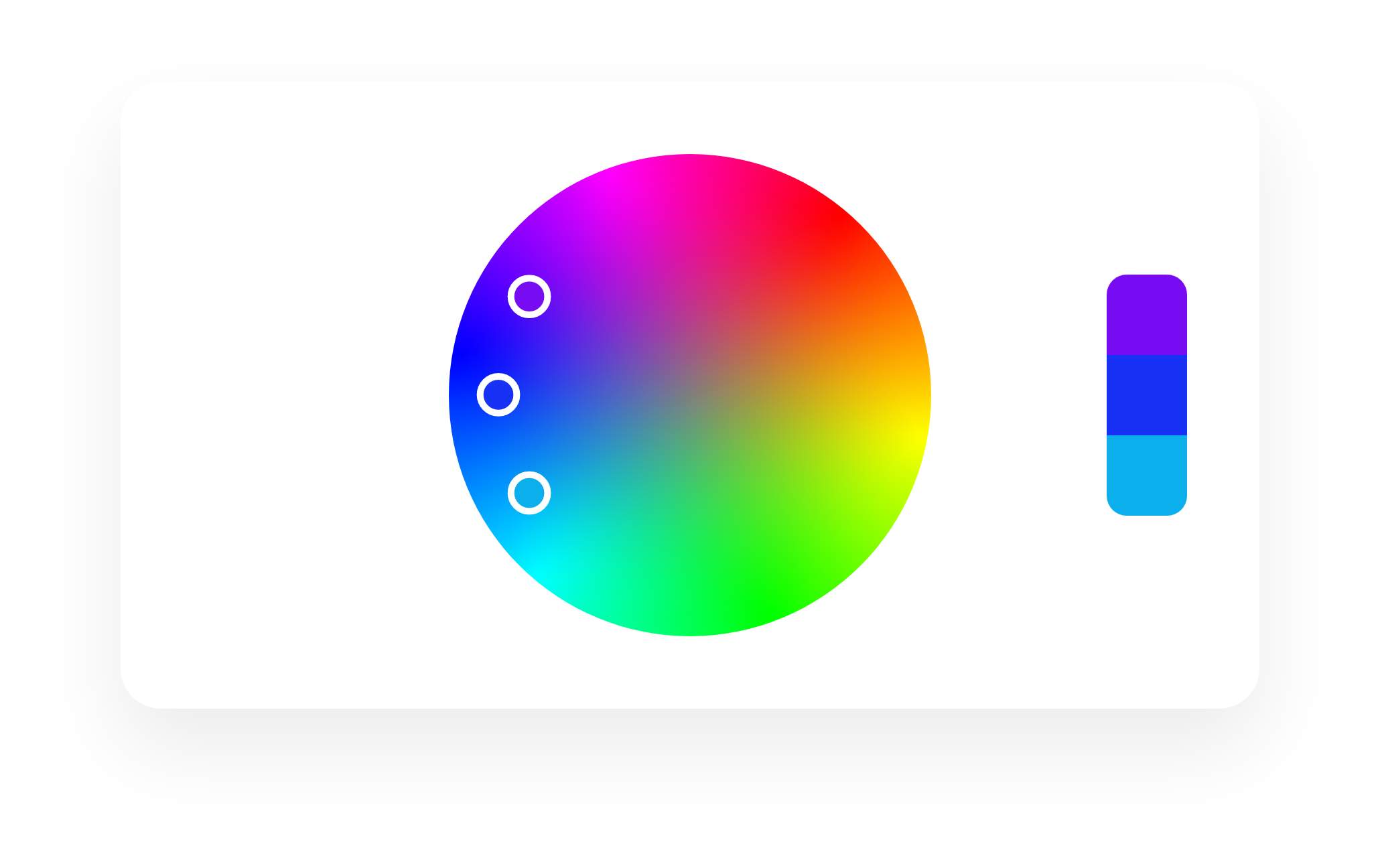

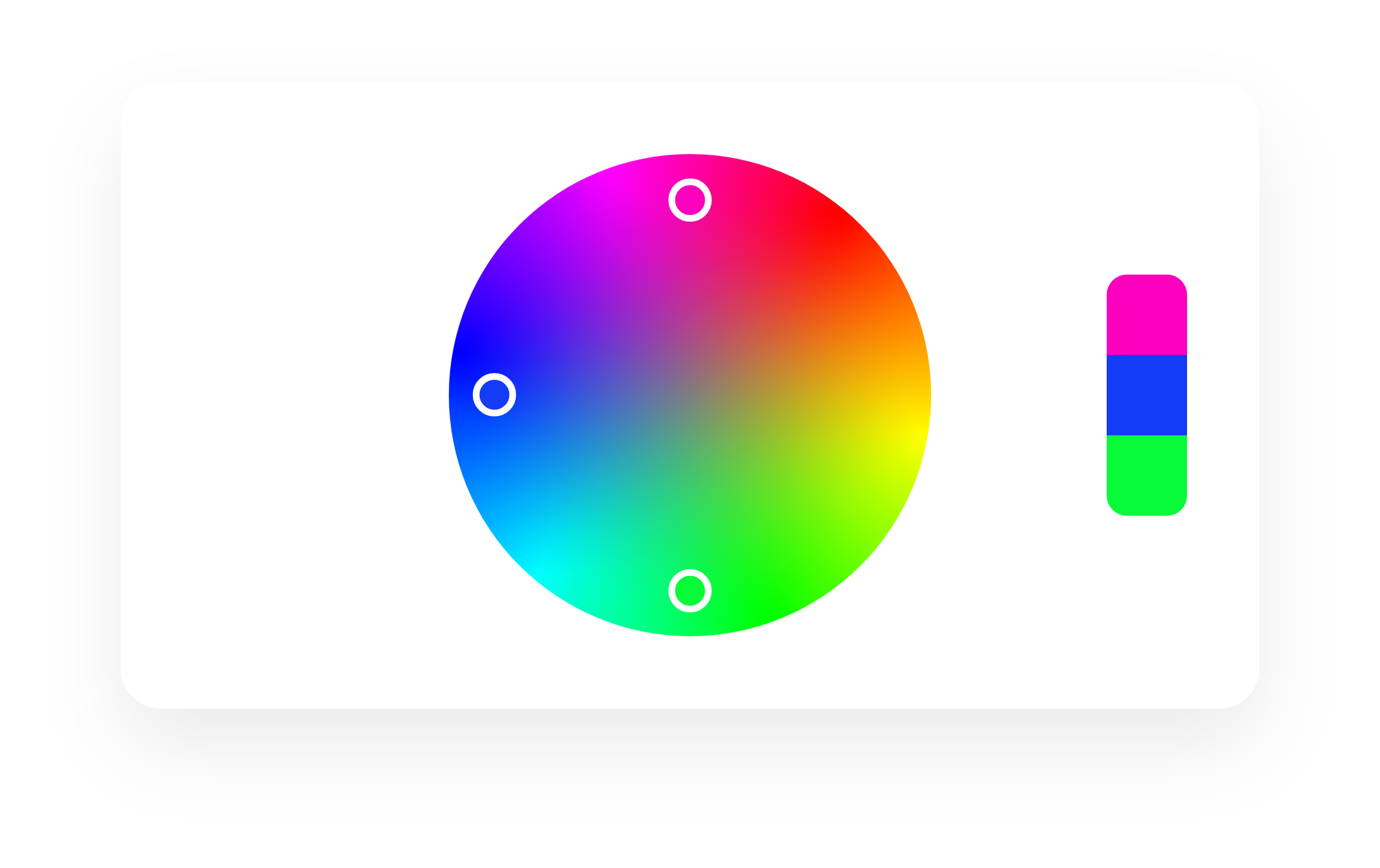

Make the Color wheel square!
A new feature of the color wheel tool for you is to use a square color wheel (I think it might be called a color cube :D).
In this section, like the circular section, you can have the color wheel as Monochromatic mode, Complementary mode, Square mode, Cool-colors mode, and Warm-colors mode.
In each section, select the desired color by flicking small circles inside the square, or enter the hexadecimal code of the desired color. And even increase or decrease the number of colors you want.
Finally, like, share, or save the desired palette. And this way, you can find colors that match. Let's see how this works?!
